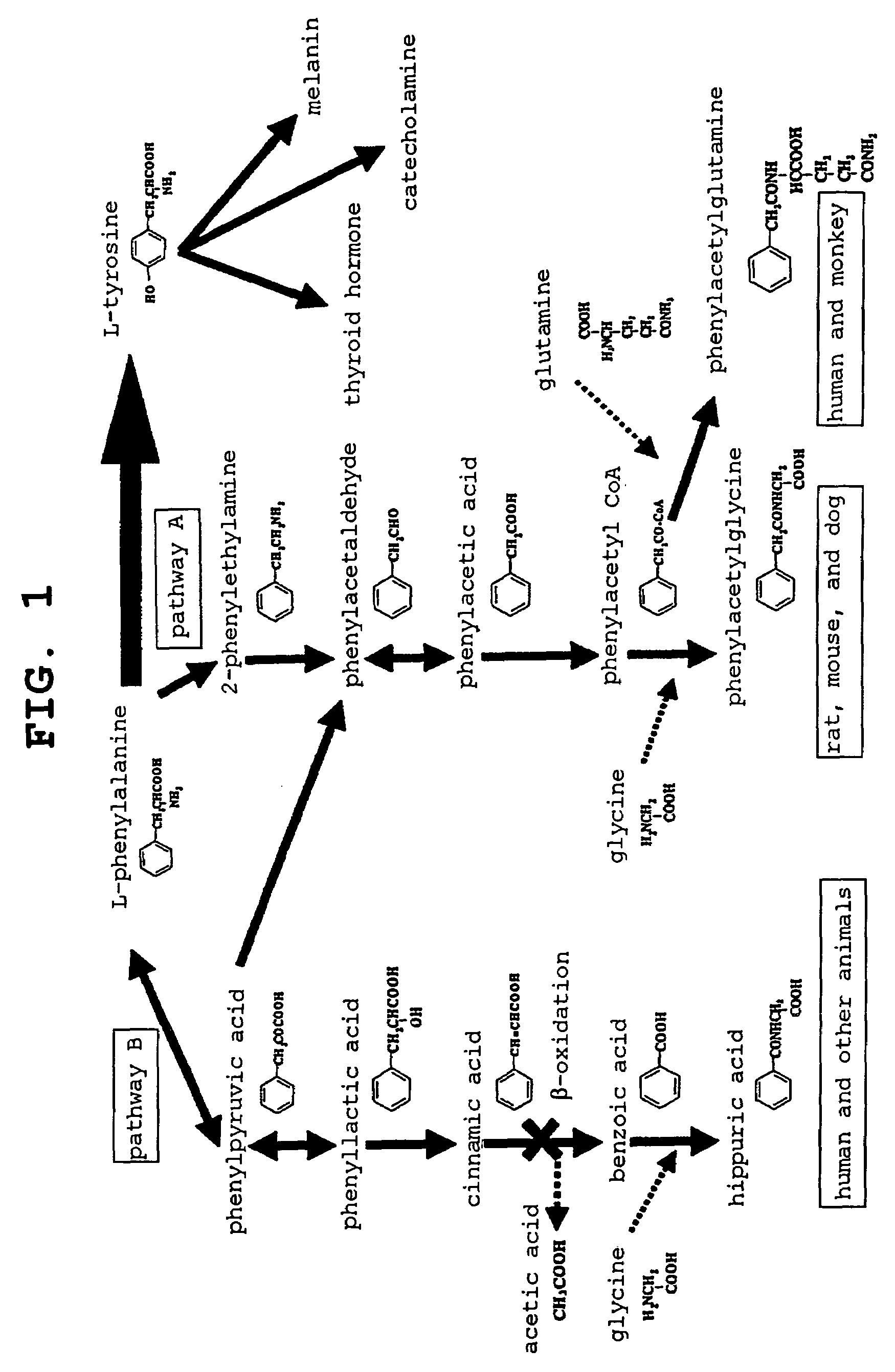Prediction method for lipidosis
a prediction method and lipidosis technology, applied in the field of lipidosis prediction method, can solve the problems of lipidosis as adverse drug reaction, interference with pharmaceutical development, induction of lipidosis, etc., and achieve the effect of high sensitivity and high accuracy
- Summary
- Abstract
- Description
- Claims
- Application Information
AI Technical Summary
Benefits of technology
Problems solved by technology
Method used
Image
Examples
example 1
Reference Example 1
Histopathological Examination and Peripheral Blood Lymphocyte Testing in Rats Receiving PLsis-inducing Compounds
[0071]The following 10 kinds of commercially available drugs were examined as the test compounds for a potential of inducing PLsis by histopathological examination and peripheral blood lymphocyte testing. Amiodarone, imipramine, clomipramine, tamoxifen, chlorpromazine, quinacrine, chloroquine, amantadine and perhexiline were purchased from SIGMA Company; fluoxetine was purchased from Wako Pure Chemical Industries. Three kinds of drugs that cause angiitis / arteriopathy but have not been reported to cause lipidosis such as PLsis (roflumilast (WO 95 / 01338), Ariflo (WO 93 / 19749) and rolipram (Japanese Patent Examined Publication No. SHO-60-11028)) were used as negative controls.
[0072]475 male 5-week-old Crj: CD(SD)IGS rats (Charles River Japan Inc., produced in closed environment) (Sep. 3, 2002: 95 animals for Study Number 32-207 / su, October 15: 95 animals fo...
example 2
Changes in the Expression of Urinary PAG / Hippuric Acid Ratio by Administration of PLsis-inducing and Non-inducing Compounds
[0107]Each test material was administered to rats for urine collection prepared in Example 1 (Reference Example 1) in the same manner; after 1 time and 3 times of administration, pooled urine was collected under fasting and water denial for about 6 hours. During the urine pooling, the collecting vessels were kept in an ice-cooled condition. After the urine collection, the urine was centrifuged at 1500×g for 10 minutes, and not less than 1 mL of the supernatant was collected and stored under freezing (below −70° C.) in a microtube in an ultralow-temperature freezer until the measurement. For the negative control group, 24-hour pooled urine was collected under ice cooling; after the urine collection, the urine was stored at −30° C. until the measurement.
[0108]1H NMR was performed as described below. The reagents listed below were used without purification. Heavy w...
example 3
Reference Example 2
Histopathological Examination and Peripheral Blood Lymphocyte Testing in Monkeys Receiving PLsis / Steatosis-inducing Compounds
[0121]The following two kinds of commercially available drugs were examined as the test compounds for the potential for inducing PLsis / steatosis by histopathological examination and peripheral blood lymphocyte testing. Amiodarone and perhexiline were purchased from SIGMA Company.
[0122]Seven 3- to 5-year-old male cynomolgus monkeys (SICONBREC, Japan Wild Animal Inc., NAFOVANNY) were obtained and acclimated for about 1 week. During that period, the animals were quarantined, examined for general conditions, and weighed. Subsequently, the animals were allocated to four groups (5 animals in total) comprising 2 animals in the control group and 1 male in each treatment group, respectively.
[0123]The animals were individually housed in wire-net-based metal cages for monkeys, and the individual cages were placed on a water-washable rack as randomized ...
PUM
| Property | Measurement | Unit |
|---|---|---|
| time | aaaaa | aaaaa |
| time | aaaaa | aaaaa |
| time | aaaaa | aaaaa |
Abstract
Description
Claims
Application Information
 Login to View More
Login to View More - R&D
- Intellectual Property
- Life Sciences
- Materials
- Tech Scout
- Unparalleled Data Quality
- Higher Quality Content
- 60% Fewer Hallucinations
Browse by: Latest US Patents, China's latest patents, Technical Efficacy Thesaurus, Application Domain, Technology Topic, Popular Technical Reports.
© 2025 PatSnap. All rights reserved.Legal|Privacy policy|Modern Slavery Act Transparency Statement|Sitemap|About US| Contact US: help@patsnap.com

